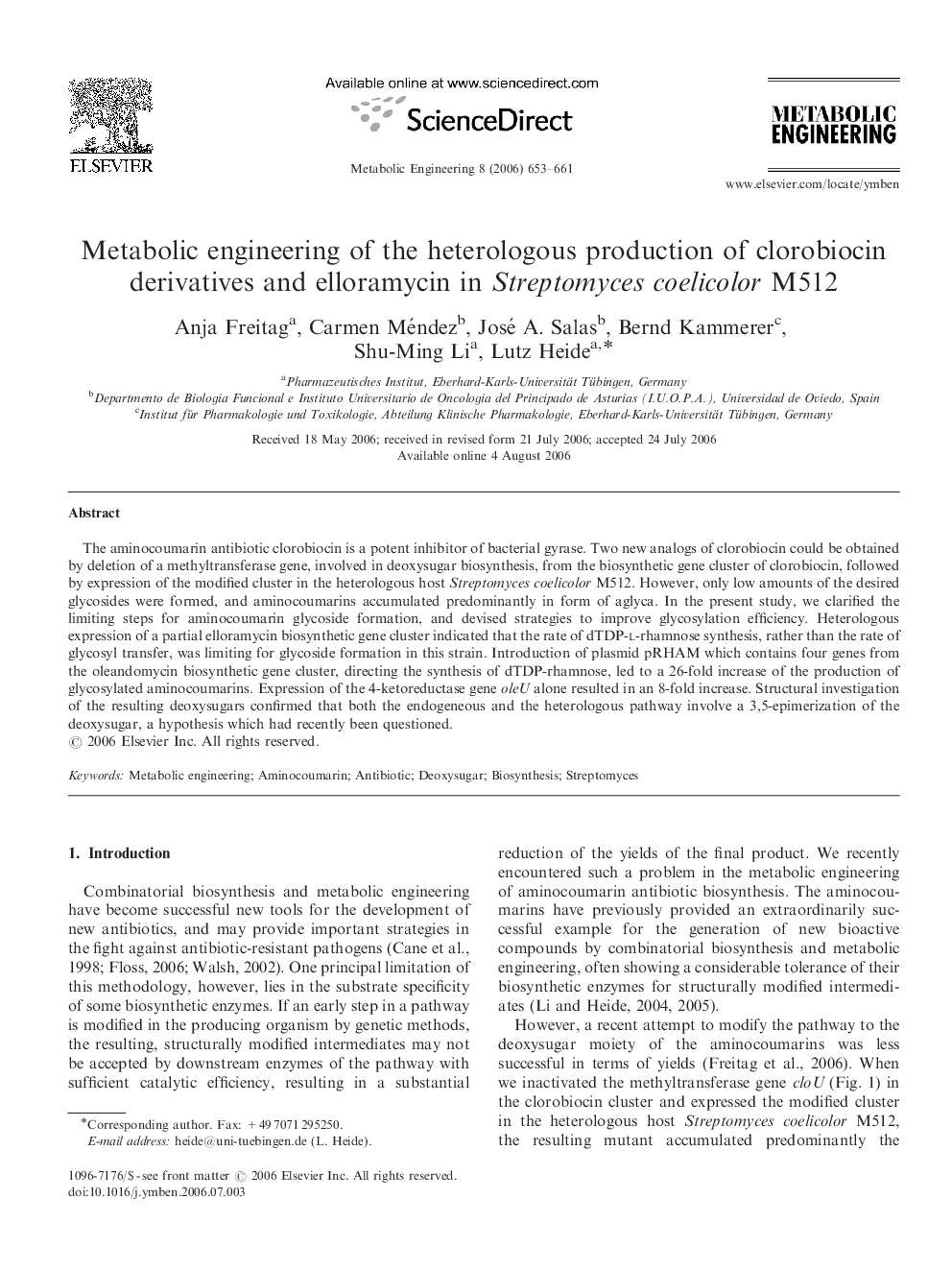| Article ID | Journal | Published Year | Pages | File Type |
|---|---|---|---|---|
| 31824 | Metabolic Engineering | 2006 | 9 Pages |
The aminocoumarin antibiotic clorobiocin is a potent inhibitor of bacterial gyrase. Two new analogs of clorobiocin could be obtained by deletion of a methyltransferase gene, involved in deoxysugar biosynthesis, from the biosynthetic gene cluster of clorobiocin, followed by expression of the modified cluster in the heterologous host Streptomyces coelicolor M512. However, only low amounts of the desired glycosides were formed, and aminocoumarins accumulated predominantly in form of aglyca. In the present study, we clarified the limiting steps for aminocoumarin glycoside formation, and devised strategies to improve glycosylation efficiency. Heterologous expression of a partial elloramycin biosynthetic gene cluster indicated that the rate of dTDP-l-rhamnose synthesis, rather than the rate of glycosyl transfer, was limiting for glycoside formation in this strain. Introduction of plasmid pRHAM which contains four genes from the oleandomycin biosynthetic gene cluster, directing the synthesis of dTDP-rhamnose, led to a 26-fold increase of the production of glycosylated aminocoumarins. Expression of the 4-ketoreductase gene oleU alone resulted in an 8-fold increase. Structural investigation of the resulting deoxysugars confirmed that both the endogeneous and the heterologous pathway involve a 3,5-epimerization of the deoxysugar, a hypothesis which had recently been questioned.
